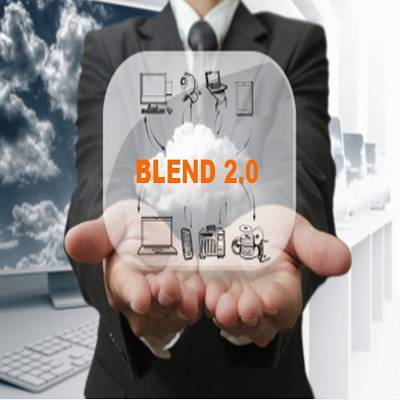Organizations globally are recognizing that blending different training types is the most effective and cost efficient way to improve performance. But what does the blended learning look like in 2014?
Introducing Blend 2.0
Interactive Services has engaged in the development of blended learning projects for many of its clients. ‘Blend 2.0’ is the term we are using to describe the type of blends we are developing right now.
Blend 2.0 describes training blends that incorporate emerging web technologies – mobile learning, gamification, and social media – with classroom or instructor-led training. This is a step up from earlier blends, which usually only combined classroom training and asynchronous eLearning.
New web technologies, such as gamification and social media, are allowing organizations to add more elements to their blended learning programs. This:
- Increases learner engagement and enthusiasm
- Encourages greater interaction
- Increase the level of feedback
- Improve the overall success rate of the learning experience
What Does Blend 2.0 Look Like?
The following illustrates what a Blend 2.0 training program might look like:
Example
A large pharmaceutical firm plans to launch a new product it believes will significantly increase its revenue in a short period of time. It is eager for its sales teams to start selling the product, but they will need training. The firm aims to develop a training program that will provide all of the content the sales team requires, but wishes to minimize classroom training time.
Solution
Blend 2.0 Program Containing 3 Components
- Classroom Training
2 day classroom module that includes product training, interactive sessions, discussion groups, and a closing assessment. - Mobile Learning Module
Provides just-in-time access to product training resources and materials (reading materials, video, etc.). This is available to learners from the beginning of the course to support their classroom training. The module will be accessible throughout their employment and will be updated whenever any new training material is developed. - Social Learning Module
The sales team has access to a social network on the company’s intranet. Like the previous module (mobile learning), learners can access this network on an ongoing basis to interact with each other, ask questions and provide feedback on their experience of selling the product in the field.
The Benefits of Popular Blend 2.0 Technologies
Mobile Learning
As most of us are already aware, mobile has become the #1 resource for accessing information on the planet. It is also an excellent tool for training employees, as it allows them to view training content at anytime and anywhere.
Mobile makes an ideal component of any Blend 2.0 program. Among other benefits, it makes training more flexible and convenient, reduces training time (rapid e-learning), increases engagement, and is more cost-effective to develop.
Gamification
Game-based training solutions have become popular in organizations on both a standalone basis and as part of training blends. In recent years, gamification has emerged as very effective method of training. The game elements of training make the experience more enjoyable and engaging for the user. It has also proven to increase knowledge retention and motivation.
Social Media
Social media can be very effective and can be easily integrated into your blended program. Learners can show mastery of content through a variety of digital tools such as blogging, Skype or video conferencing. Social media gives them the option to constantly share knowledge and interact with each other well beyond the hours spent in the classroom and online discussions can become engaging.
Interactive PDFs
Most of us are familiar with standard PDF documents, which are meant for reading only and generally cannot be edited. Interactive PDFs can be viewed on screen and (as the name suggests) contain features that make the user’s experience ‘interactive’ ‒ features such as navigation buttons, videos to explain a subject in detail, hyperlinks to web resources, and text entry fields to enable submission of information.
Interactive workbooks can be an excellent addition to any training blend. They prove particularly useful in facilitating training assessments and feedback requests. They are mobile friendly and their interactive nature can draw learners in and hold their attention for longer, thus creating a more effective learning experience.
To find out more about some of the web technologies used as part of Blend 2.0, read Enhanced Learning and Teaching through Utilization of Web-based Technologies.
What does the future look like?
Constant advances in technology can only mean one thing for blended learning programs – the blend will inevitably diversify as new, more innovative technologies emerge. Learning developers will discover new ways to deliver enhanced, richer and more enjoyable learning. This will undoubtedly lead to improved performance and talent in organizations, and result in increased success and ROI from training.









